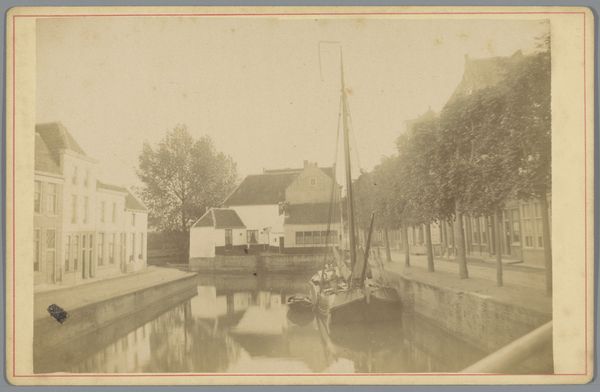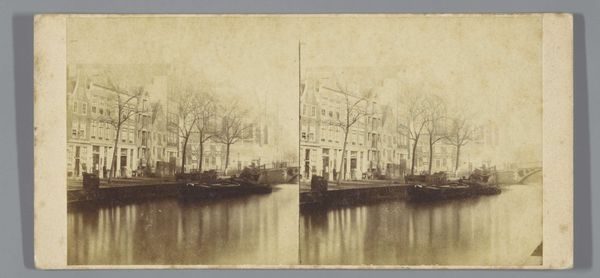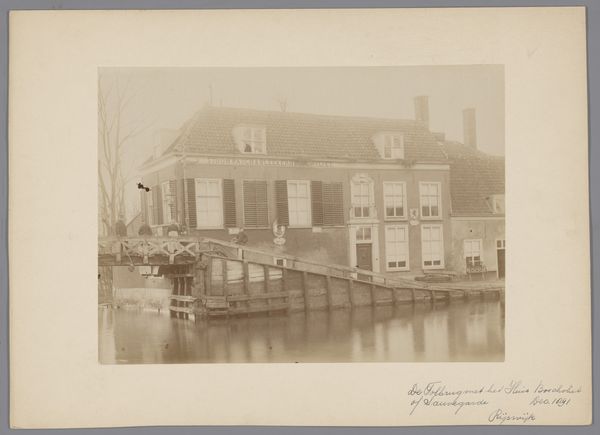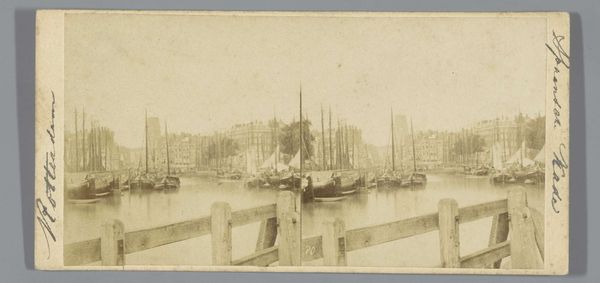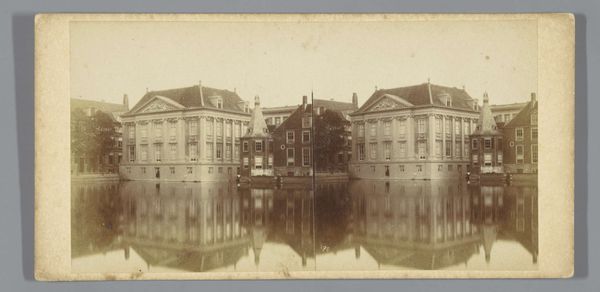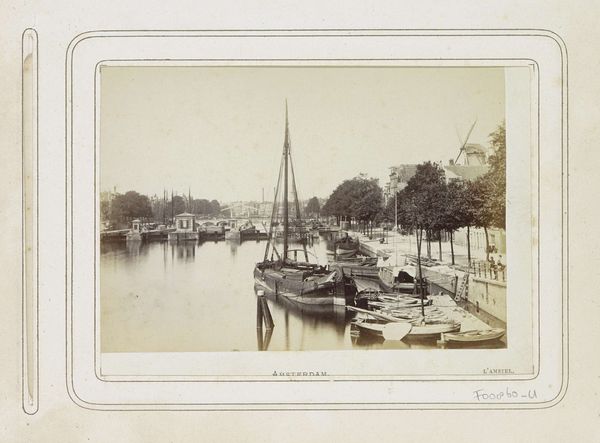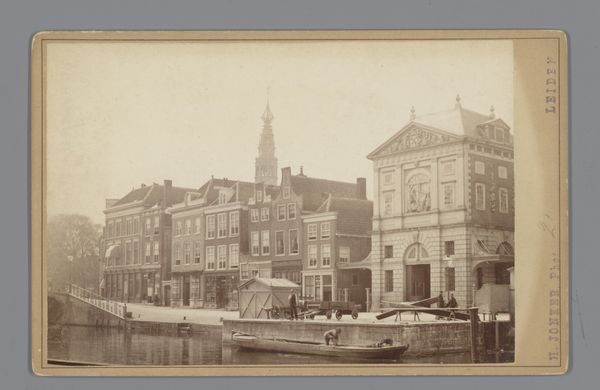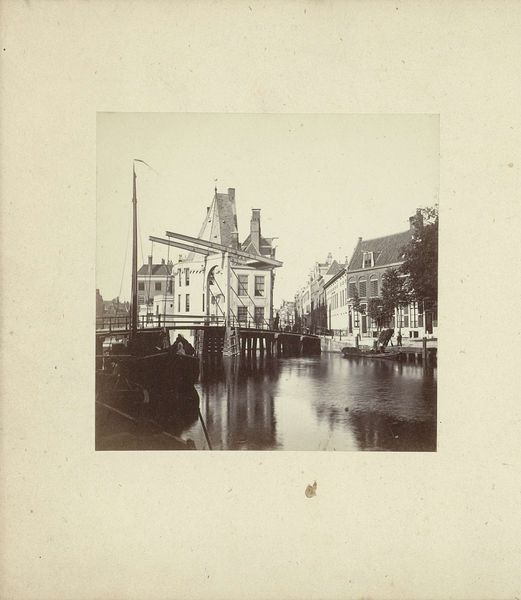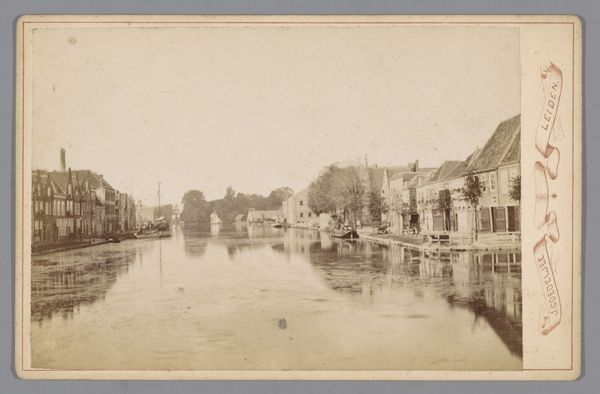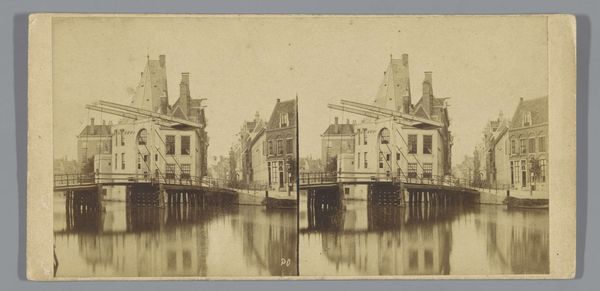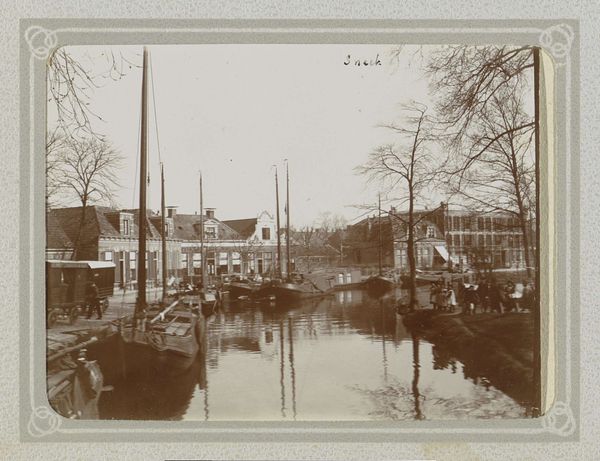
Dimensions: height 83 mm, width 176 mm
Copyright: Rijks Museum: Open Domain
Editor: So, this gelatin silver print, "Waag en de kraan aan het Spaarne, Haarlem" by Pieter Oosterhuis, was taken between 1859 and 1865. It’s… muted. Almost dreamlike. What stands out to you in this cityscape? Curator: This image, while seemingly a straightforward depiction of Haarlem, operates on several levels. It was captured during a period of intense social and economic transformation in the Netherlands. Think about the role of the "Waag," the weighing house – a symbol of commerce and civic power. How do you think Oosterhuis positions that symbol in relation to the rapidly changing urban landscape? Editor: I guess I hadn't thought about it like that. It’s there, it’s present, but… overshadowed by the tree almost? Is that maybe a commentary on nature versus progress? Curator: Exactly. And consider this: Photography itself was a disruptive technology. How did its rise impact traditional artistic and social hierarchies? Was Oosterhuis, through his artistic choices, commenting on photography’s power to democratize representation, or perhaps critiquing its potential to erase the past? Think about who had access to these images and what that might tell us about the distribution of power at the time. Editor: That makes me see it in a completely new way! It's not just a pretty picture; it's a document embedded in a specific moment of societal shift. It's like Oosterhuis is inviting us to consider the tensions between tradition and modernity. Curator: Precisely. By looking closely, and by asking these types of intersectional questions, we move beyond a surface level appreciation of beauty and toward a critical engagement with art's historical and social function. What was previously invisible becomes tangible and ready to debate. Editor: Thanks! I’ll definitely think about photography's disruptive role in that time, it gives this gelatin print a new narrative dimension.
Comments
No comments
Be the first to comment and join the conversation on the ultimate creative platform.
